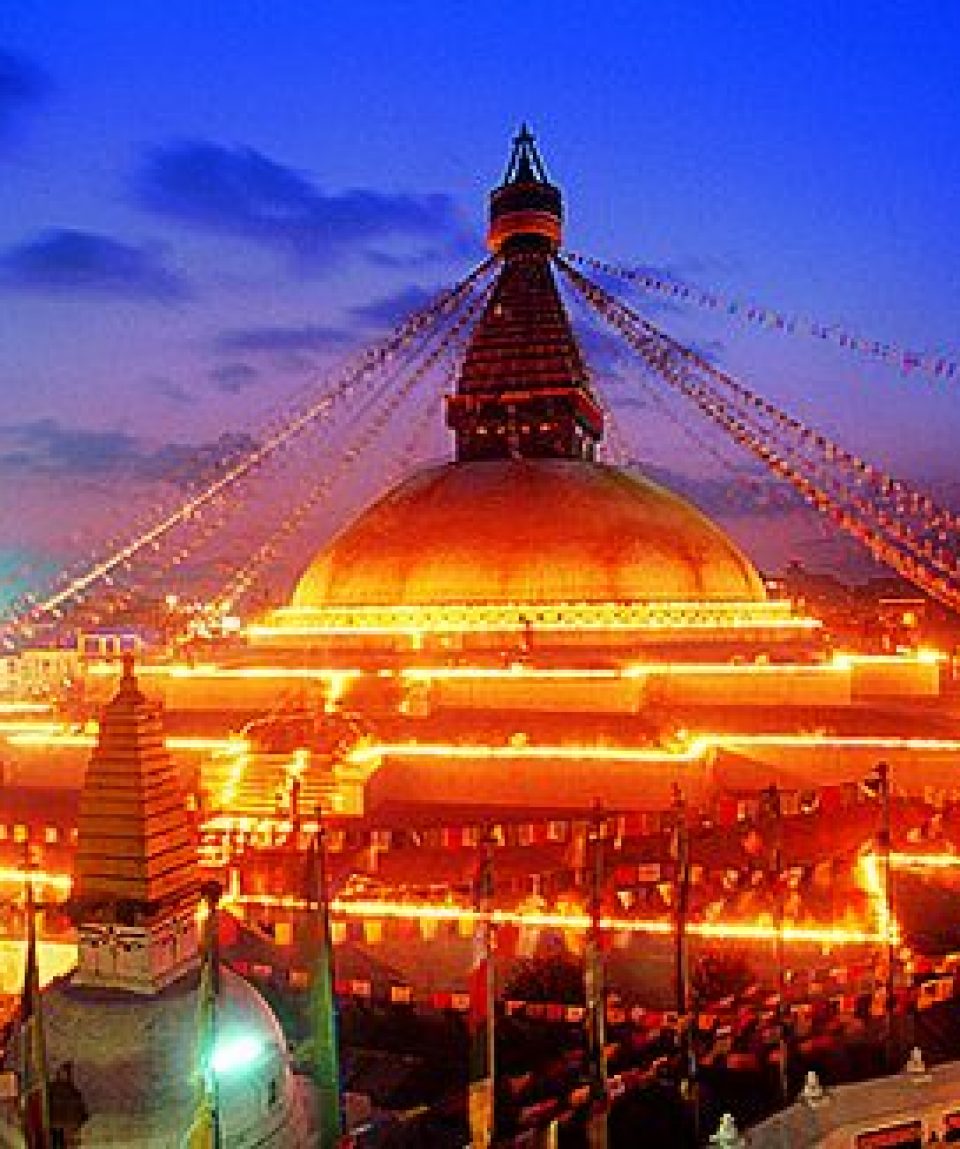Boudhanath Stupa
Boudhanath is a stupa in Kathmandu, Nepal. Located about 11 km from the center and northeastern outskirts of Kathmandu, the stupa’s massive mandala makes it one of the largest spherical stupas in Nepal. The Boudha Stupa dominates the skyline; it is one of the largest stupas in the world. The Boudhanath Stupa has stood as a beacon of Buddhist belief, towering over the surrounding town as a giant mandala of peace and beauty and also giant eyes.
-
Reviews 0 Reviews0/5
-
Vacation Style Holiday Type
-
Activity Level Leisurely
-

Boudha, is one of the UNESCO World Heritage sites and one of the most imposing landmarks in Kathmandu. Visible as soon as you land at the Tribhuvan International Airport, it is the largest stupa in the Kathmandu Valley. Built sometime around the 14th century, the huge meditative monument is said to have been created just after the passing of the Buddha. The huge offering site quickly become a focal point of worship and offering in the area. The structure of the building consists of a giant dome, on the top which sits a Buddhist pyramid tower. All of this sits on top of huge steps shaped like mandalas themselves. Originally the stupa’s spot was on an important trade route which allowed for a steady stream of possible converts. Among the Nepalese in Kathmandu, the stupa is simply referred to as “Chorten Chenpo” which translates to “Great Tower” or just “Great Stupa.” No matter what pilgrims called it, they flocked to the monument in droves.

Built in the shape of a mandala designed to replicate the Gyangtse of Tibet, the stupa was renovated by Licchhavi rulers in the 8th century. The location of the stupa is interesting as it once lay on the ancient trade route to Tibet and it was here that Tibetan merchants rested and offered prayers for many centuries. It is one of the major pilgrimage sites for Buddhists from around the world.
What to Do
- Circumambulate: The stupa (walk clockwise around it). This is the main activity of pilgrims & many tourists too. One lap is approx. 150 meters. At the far side from the main gate entrance it is possible to walk up on to the stupa itself during the daytime.
- Photography: The stupa & its surroundings are very photogenic, but please don’t take pictures of people without their permission.
- Monastery tour:Please practice good manners. Ask the first monk or nun you see at the place (monastery or nunnery) you wish to visit for permission, before wandering around their home grounds. Some (not all) encourage the public to visit by offering guided tours, classes, puja services, meals, & gift shops. While on their sacred grounds, be respectful, don’t smoke, turn off cell phones, lower your voice, leave your shoes outside before entering any temples or buildings, & get permission before taking pictures. Bear in mind that monasteries & nunneries are sanctuaries for inner practice, not tourist attractions. Most (if not all) of them welcome donations.
Travel Tips:
- Wear clothing that expresses respect for the sacred nature of the site.
- Take your shoes off before entering temple buildings and some shops. Follow the lead of the locals.
- Circumambulate the stupa & other sacred objects in a clock-wise direction.
- Preserve the peace and tranquility.
- Do not climb onto statues or other sacred objects.
- Do not take pictures of people without their permission.
Stupas were originally built to house holy relics and some claim that Boudhanath contains the relics of the past Buddha, Kashyapa, while others say it contains a piece of bone from the skeleton of Siddhartha Gautama, the historical Buddha.
The Boudhanath Stupa in northeast suburb is about 11km (6.8miles) to center Kathmandu City. Walking from Thamel Street to Boudhanath Stupa is about 1 hour at a distance about 6km and 25 minutes if taking a taxi.


